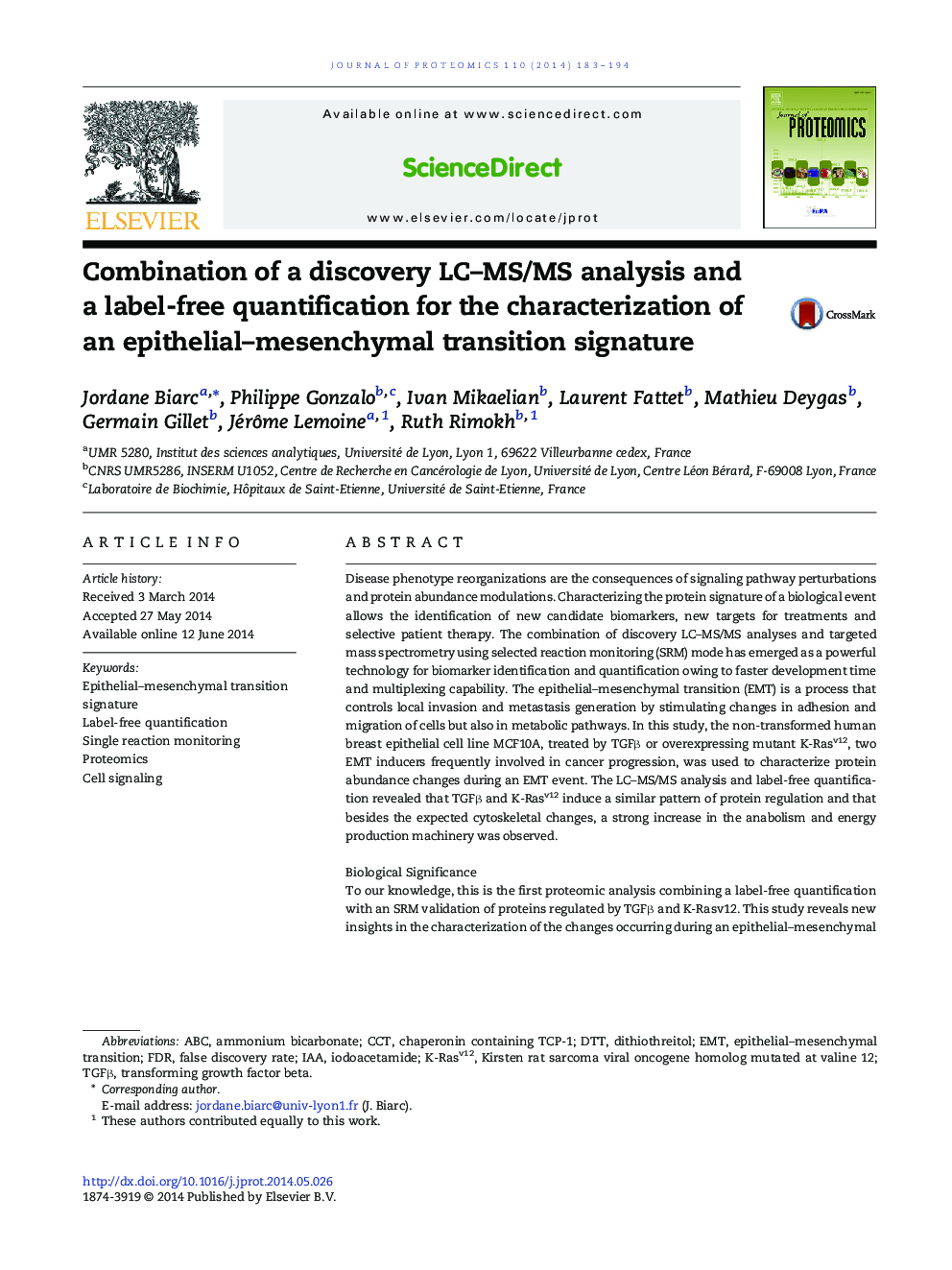| Article ID | Journal | Published Year | Pages | File Type |
|---|---|---|---|---|
| 1225730 | Journal of Proteomics | 2014 | 12 Pages |
•EMT proteome induced by TGFβ/K-Rasv12 was characterized.•Proteome regulations were analyzed by LC–MS/MS and label quantification.•EMT regulates cytoskeleton but also the anabolism and energy production machinery.
Disease phenotype reorganizations are the consequences of signaling pathway perturbations and protein abundance modulations. Characterizing the protein signature of a biological event allows the identification of new candidate biomarkers, new targets for treatments and selective patient therapy. The combination of discovery LC–MS/MS analyses and targeted mass spectrometry using selected reaction monitoring (SRM) mode has emerged as a powerful technology for biomarker identification and quantification owing to faster development time and multiplexing capability. The epithelial–mesenchymal transition (EMT) is a process that controls local invasion and metastasis generation by stimulating changes in adhesion and migration of cells but also in metabolic pathways. In this study, the non-transformed human breast epithelial cell line MCF10A, treated by TGFβ or overexpressing mutant K-Rasv12, two EMT inducers frequently involved in cancer progression, was used to characterize protein abundance changes during an EMT event. The LC–MS/MS analysis and label-free quantification revealed that TGFβ and K-Rasv12 induce a similar pattern of protein regulation and that besides the expected cytoskeletal changes, a strong increase in the anabolism and energy production machinery was observed.Biological SignificanceTo our knowledge, this is the first proteomic analysis combining a label-free quantification with an SRM validation of proteins regulated by TGFβ and K-Rasv12. This study reveals new insights in the characterization of the changes occurring during an epithelial–mesenchymal transition (EMT) event. Notably, a strong increase in the anabolism and energy production machinery was observed upon both EMT inducers.
Graphical abstractFigure optionsDownload full-size imageDownload high-quality image (263 K)Download as PowerPoint slide
